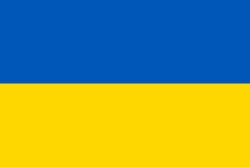Kievan Rus'

Kievan Rus', also known as Kyivan Rus' (Old East Slavic: Роусь, romanized: Rusĭ, or ро́усьскаѧ землѧ́, rusĭskaę zemlę; Old Norse: Garðaríki), was a state and later an amalgam of principalities in Eastern and Northern Europe from the late 9th to the mid-13th century. Encompassing a variety of polities and peoples, including East Slavic, Norse, and Finnic, it was ruled by the Rurik dynasty, founded by the Varangian prince Rurik. The modern nations of Belarus, Russia, and Ukraine all claim Kievan Rus' as their cultural ancestor, with Belarus and Russia deriving their names from it. At its greatest extent in the mid-11th century, Kievan Rus' stretched from the White Sea in the north to the Black Sea in the south and from the headwaters of the Vistula in the west to the Taman Peninsula in the east, uniting the East Slavic tribes.According to the Primary Chronicle, the first ruler to start uniting East Slavic lands into what would become Kievan Rus' was Prince Oleg (r. 879–912). He extended his control from Novgorod south along the Dnieper river valley to protect trade from Khazar incursions from the east, and took control of the city of Kiev (Kyiv). Sviatoslav I (r. 943–972) achieved the first major territorial expansion of the state, fighting a war of conquest against the Khazars. Vladimir the Great (r. 980–1015) spread Christianity with his own baptism and, by decree, extended it to all inhabitants of Kiev and beyond. Kievan Rus' reached its greatest extent under Yaroslav the Wise (r. 1019–1054); his sons assembled and issued its first written legal code, the Russkaya Pravda, shortly after his death.The state began to decline in the late 11th century, gradually disintegrating into various rival regional powers throughout the 12th century. It was further weakened by external factors, such as the decline of the Byzantine Empire, its major economic partner, and the accompanying diminution of trade routes through its territory. It finally fell to the Mongol invasion in the mid-13th century, though the Rurik dynasty would continue to rule until the death of Feodor I of Russia in 1598.
Excerpt from the Wikipedia article Kievan Rus' (License: CC BY-SA 3.0, Authors, Images).Kievan Rus'
Malopidvalna Street, Kyiv Центр
Geographical coordinates (GPS) Address Nearby Places Show on map
Geographical coordinates (GPS)
| Latitude | Longitude |
|---|---|
| N 50.45 ° | E 30.516666666667 ° |
Address
Malopidvalna Street 14
01028 Kyiv, Центр
Ukraine
Open on Google Maps









